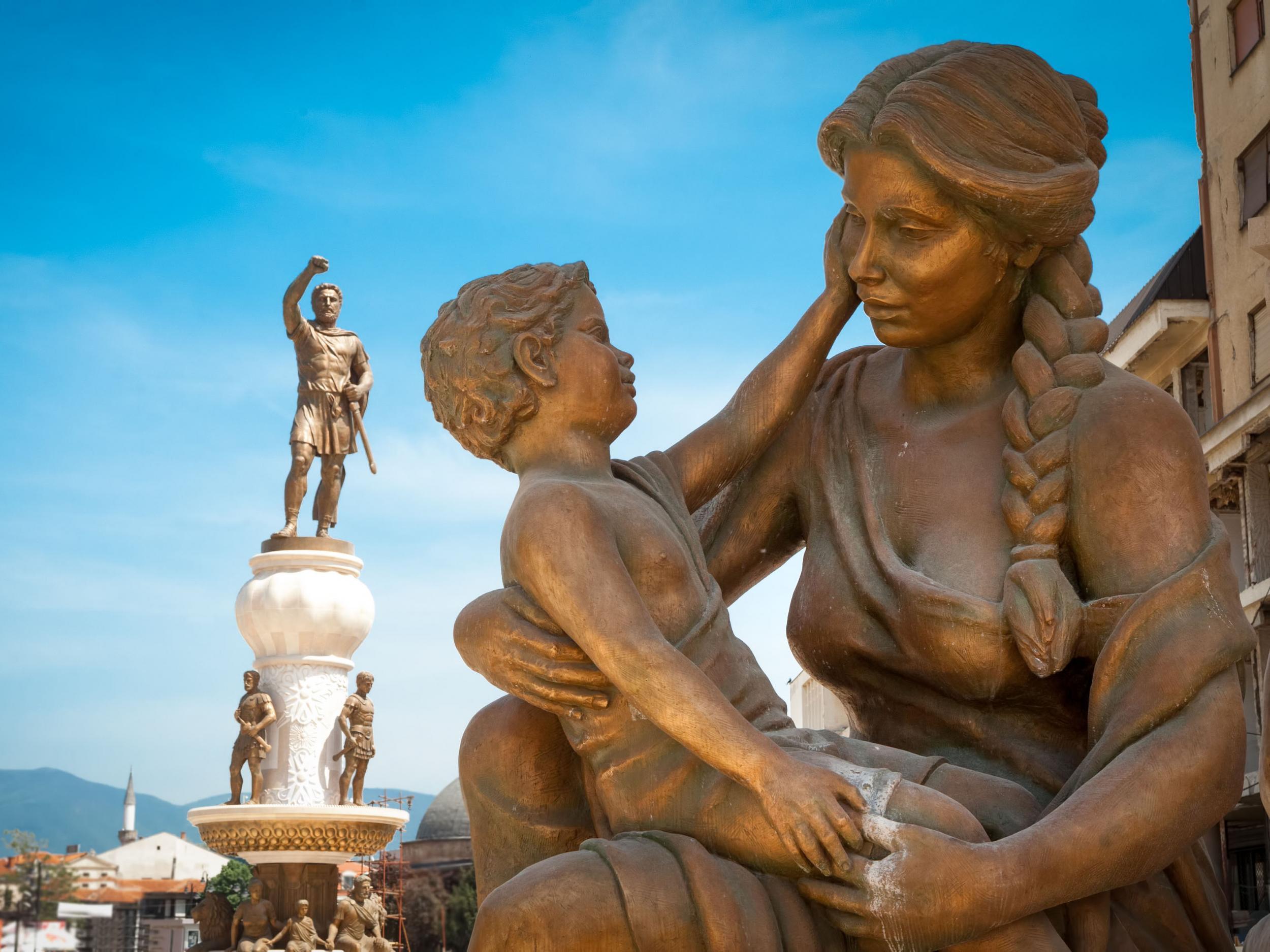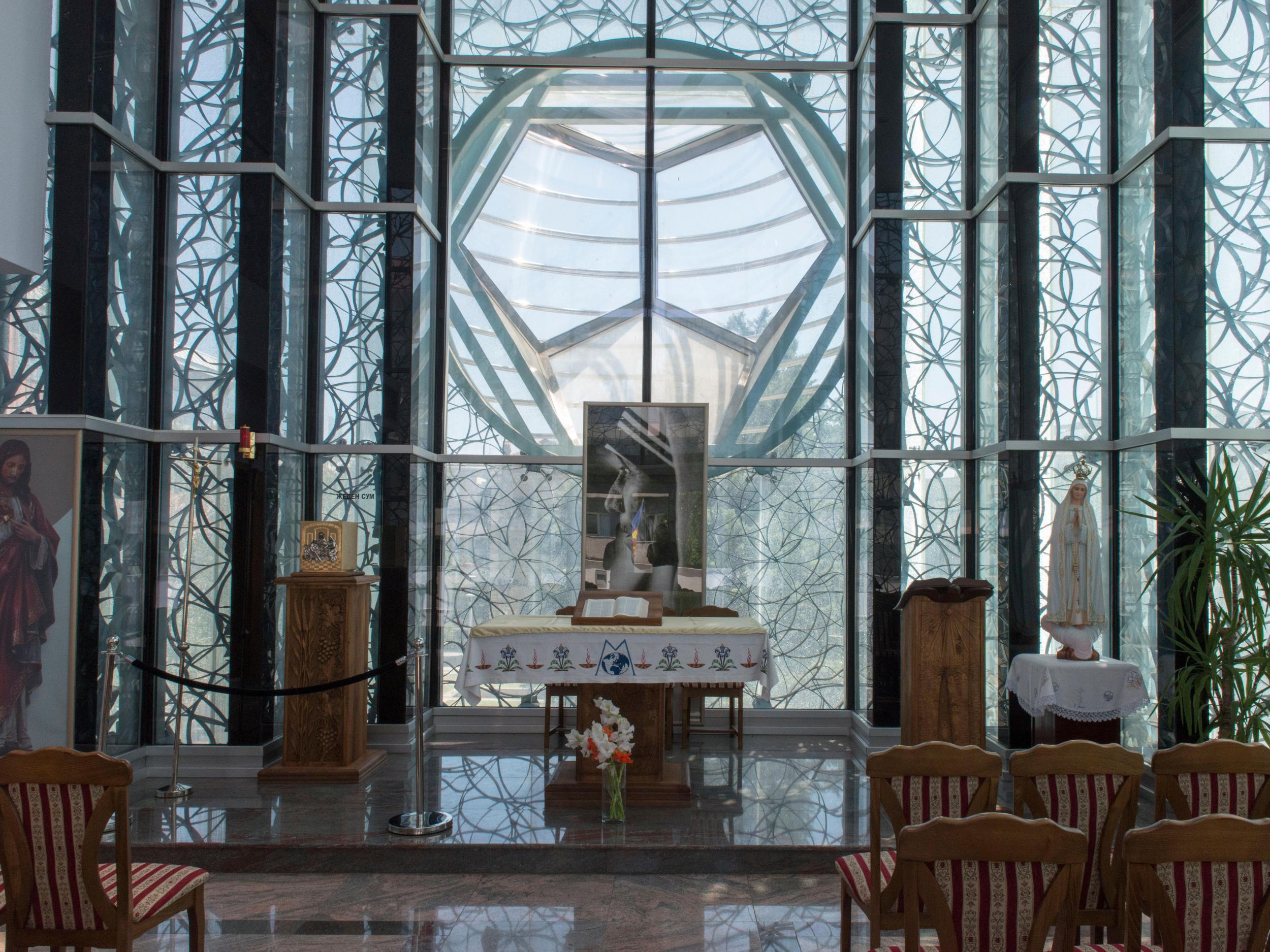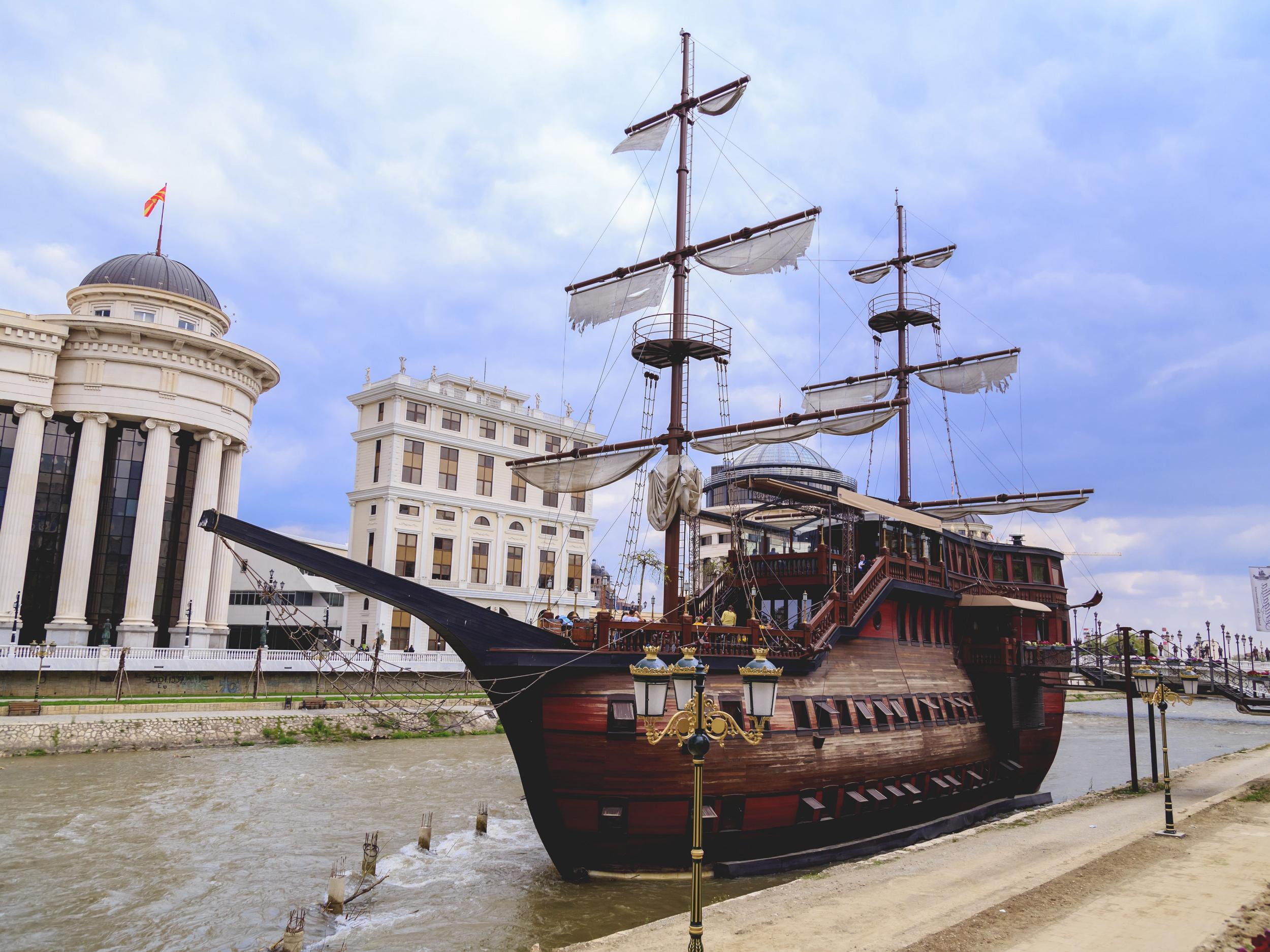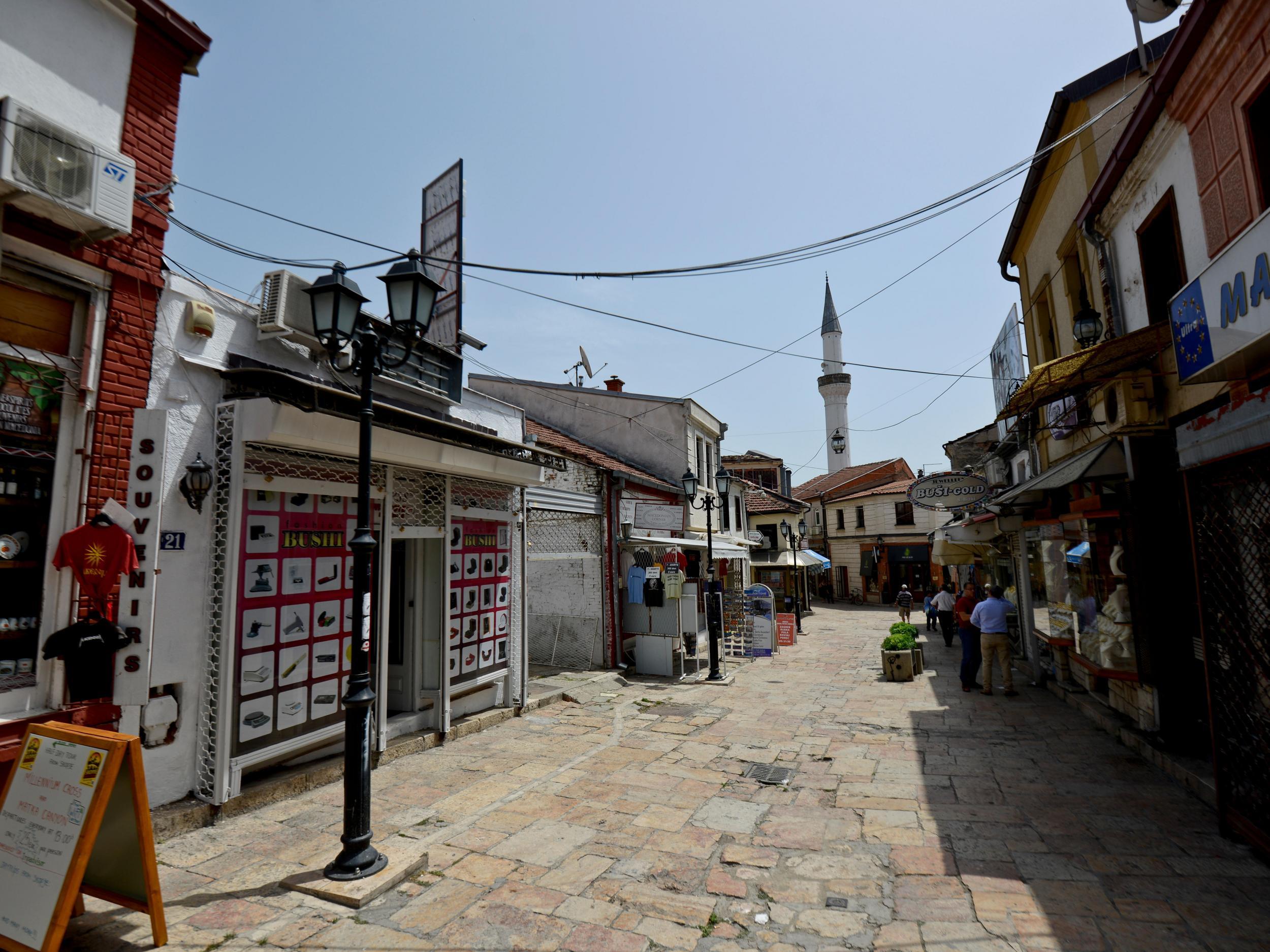A tour of the city known as the kitsch capital of the world
Pirate ships, Mother Teresa, and Alexander the Great have all found their home in Skopje

Skopje, Macedonia – Quick quiz. Which of the following makes sense?
a) Three pirate ships on a river in a landlocked country in the Balkans;
b) A 47-foot-high bronze statue of an ancient warrior that is Alexander the Great and is also not Alexander the Great; or
c) A house dedicated to Mother Teresa, a saint known for her modesty, done up in an opulent style that can best be described as Miami meets The Flintstones.
Answer: None, unless you are in Skopje, Macedonia. They all have a home there as part of a long-running face-lift for the city, which has turned it into what could be one of the kitschiest capitals on the planet.
About a decade ago, the then-governing party of Macedonia came up with an idea for a citywide building and renovation project as a way to claim ownership of its history and draw in tourists.
Hundreds of new sculptures were put up across the city, and many new buildings erected in the centre of town. Dozens of false facades were added to Communist-era buildings, while scores of plaques appeared, attesting to events with varying degrees of historical accuracy.
The project cost hundreds of millions more than public projections and has been roundly derided by urban planners and architects, who say it was rushed into reality at the cost of structural integrity and functionality. It was a central issue in the protests in 2015 that led to the defeat of the ruling party.
Nikola Strezovski, a 37-year-old architect, has watched the project – called Skopje 2014 because it was supposed to be completed in 2014 – with a mixture of disgust, anger and confusion.

“Skopje 2014 was something that shocked us all the time,” he said. “By the time the pirate ships arrived on the Vardar River, we were used to crazy.”
When the new government came into power last spring, its first move was to halt all of the projects, including the construction of a London-style Ferris wheel on the river and the recladding of the city’s tallest glass building in a plastic foam and plaster facade intended to make it look neoclassical.
But after spending around $750m (£500m) – in a country where the average wage is less than $500 per month – the capital has been transformed.
It is not the first time Skopje has been rebuilt. The last time, natural forces were responsible.
In 1963, an earthquake laid waste to the city, killing more than 1,000 people and making another 100,000 homeless. Roughly 80 percent of the city’s structures were destroyed.
The UN held a competition to find an architect to help rebuild. The winner was Kenzo Tange, a pioneer of the 1960s avant-garde Metabolist movement, which held that cities, like living organisms, had to constantly grow and change and should be built so that their parts could be replaced as time passed.
His vision, though, was never fully realised. Instead, what emerged was a strange mishmash of modernist buildings, Brutalist structures and dour Soviet-style block houses, many of which long ago fell into disrepair.

Architecture represents the society that creates it, said Strezovski, who recently led me on a four-hour walking tour of Skopje. And the city today, he said, radiates the insecurity of the previous ruling party.
“Architecture at its heart is about honesty,” he said, adding that covering buildings in false facades, as Skopje 2014 did, is about as dishonest as you can get.
It makes sense, he said, given how many former members of the political party responsible for the project, including the former prime minister, are now on trial for corruption and other offences.
When the former prime minister Nikola Gruevski announced the project, he argued that it would create much-needed jobs and bolster national pride. And there are those who appreciate it, even for its sheer madness. Ultimately, it was all about more than aesthetics; it was an effort to stake a claim to a disputed historical heritage.
For more than two decades, Greece has fought Macedonians’ efforts to call their country Macedonia, blocking its entry into Nato and the European Union. It is a complicated dispute as much about modern politics as historical reality, but it boils down to this: Greeks believe that ancient Macedonians were a Hellenistic people and that the true Macedonia is a part of Greece.
People here, though, believe that because their land was part of the ancient Macedonian kingdom ruled by Alexander the Great, they have every right to call themselves Macedonian.

When Skopje 2014 was conceived, the ruling party wanted it both ways: to claim their history, but not so blatantly as to derail negotiations with Greece over the name issue.
So a statue of a warrior on a horse set high upon a pedestal in a fountain flanked by lions in the city’s central plaza is called “warrior on a horse.” Yet everyone understands it to be a depiction of Alexander the Great, ruler of the ancient Macedonian kingdom.
Across the Vardar River, which bisects the city, is a statue of a man, fist raised into the air and looking at the Alexander statue and the Vodno Mountain in the distance. He is not identified as Alexander’s father, Philip II, although everyone knows that is who it is.
Visitors to the city will first notice the statues. There is no official count, but estimates put the number around a thousand. They adorn parks, roads, squares, bridges and the rooftops of buildings, and were even plunked into the river itself, where the three pirate ships house restaurants, although not ones wildly popular with locals.
Of course, no pirates ever roamed the Vardar. And even if pirates had wanted to come to this landlocked country, the ships could never pass under the ancient stone bridge that leads across the river to the Ottoman bazaar, which mostly survived the earthquake.
With its narrow, winding cobblestone streets and low-slung rooflines, the bazaar seems a world away from the monumental memorials and statues that surround it.
Here and there are still traces of some of the city’s more prized modernist buildings, including the opera house.
“It would have cost too much to tear down or redesign the opera house,” Strezovski said. “So instead, they put some buildings in front of it to hide it.”

Those buildings, for government offices, are adorned with dancing nymphs and statues of great women throughout history. One of the buildings, the National Archive, is now leaking, Strezovski said. Others have structural problems.
Strezovski said he could appreciate how people might be amused at how bizarre it all is. Unfortunately, it came at a great cost, and much of it was built so poorly that it is unlikely to last.
He pointed to palm trees, put in as part of the project, that are still struggling to survive on the riverbank.
“Palm trees, here,” he said, noting that temperatures in the winter can drop to well below freezing.
They cost over $600,000, according to an investigation by the news site Balkan Insight. “Around 95 percent died in the first year,” Strezovski said.
© New York Times
Join our commenting forum
Join thought-provoking conversations, follow other Independent readers and see their replies
Comments
Bookmark popover
Removed from bookmarks